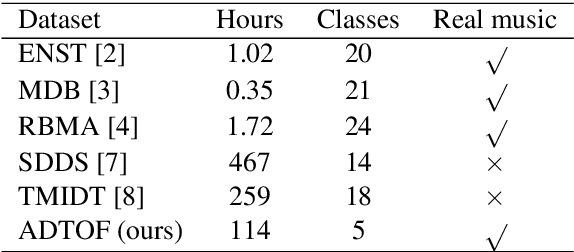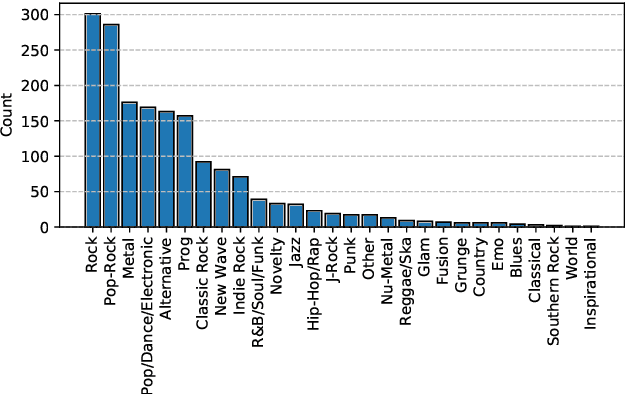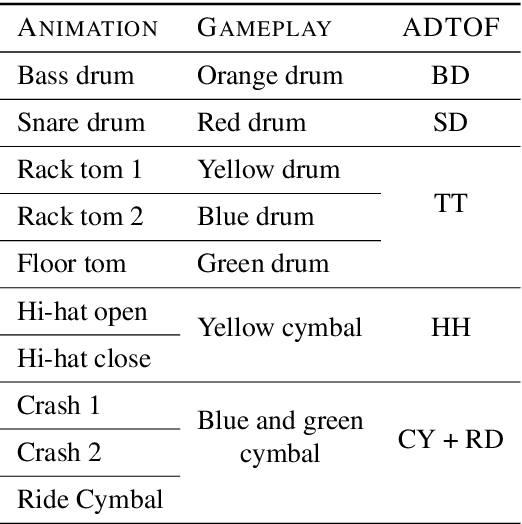Marco Alunno
Analyzing and reducing the synthetic-to-real transfer gap in Music Information Retrieval: the task of automatic drum transcription
Jul 29, 2024Abstract:Automatic drum transcription is a critical tool in Music Information Retrieval for extracting and analyzing the rhythm of a music track, but it is limited by the size of the datasets available for training. A popular method used to increase the amount of data is by generating them synthetically from music scores rendered with virtual instruments. This method can produce a virtually infinite quantity of tracks, but empirical evidence shows that models trained on previously created synthetic datasets do not transfer well to real tracks. In this work, besides increasing the amount of data, we identify and evaluate three more strategies that practitioners can use to improve the realism of the generated data and, thus, narrow the synthetic-to-real transfer gap. To explore their efficacy, we used them to build a new synthetic dataset and then we measured how the performance of a model scales and, specifically, at what value it will stagnate when increasing the number of training tracks for different datasets. By doing this, we were able to prove that the aforementioned strategies contribute to make our dataset the one with the most realistic data distribution and the lowest synthetic-to-real transfer gap among the synthetic datasets we evaluated. We conclude by highlighting the limits of training with infinite data in drum transcription and we show how they can be overcome.
ADTOF: A large dataset of non-synthetic music for automatic drum transcription
Nov 23, 2021



Abstract:The state-of-the-art methods for drum transcription in the presence of melodic instruments (DTM) are machine learning models trained in a supervised manner, which means that they rely on labeled datasets. The problem is that the available public datasets are limited either in size or in realism, and are thus suboptimal for training purposes. Indeed, the best results are currently obtained via a rather convoluted multi-step training process that involves both real and synthetic datasets. To address this issue, starting from the observation that the communities of rhythm games players provide a large amount of annotated data, we curated a new dataset of crowdsourced drum transcriptions. This dataset contains real-world music, is manually annotated, and is about two orders of magnitude larger than any other non-synthetic dataset, making it a prime candidate for training purposes. However, due to crowdsourcing, the initial annotations contain mistakes. We discuss how the quality of the dataset can be improved by automatically correcting different types of mistakes. When used to train a popular DTM model, the dataset yields a performance that matches that of the state-of-the-art for DTM, thus demonstrating the quality of the annotations.
 Add to Chrome
Add to Chrome Add to Firefox
Add to Firefox Add to Edge
Add to Edge